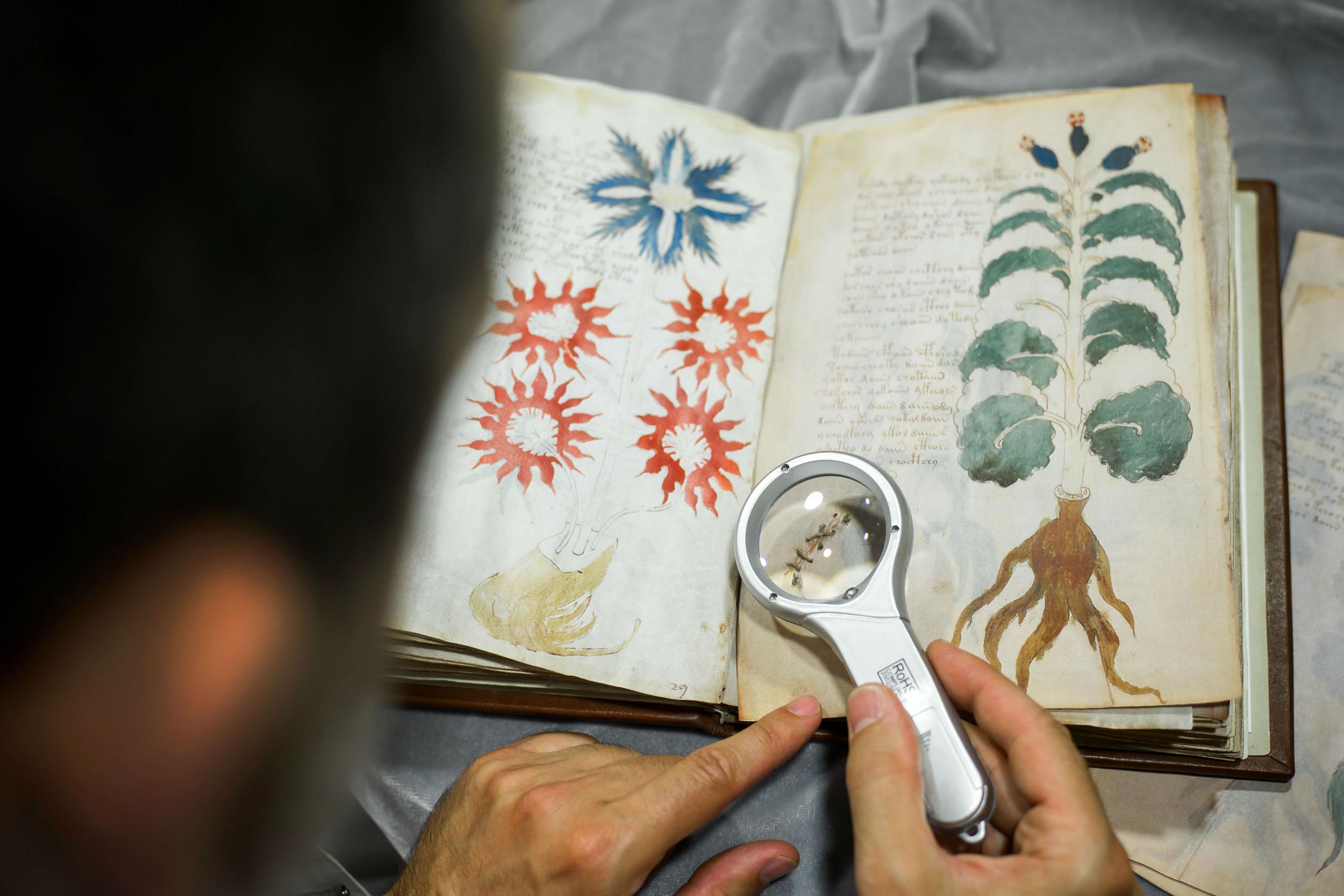
The 240 pages of the book are made from a type of parchment produced using calf skin, known as vellum.Įach page is decorated with illustrations, diagrams and a mysterious text written from left to right.ĭue to its mysterious nature, the text has been studied by cryptographers around the world, yet no-one has succeeded in deciphering the reams of written passages.
.jpg)
The Voynich manuscript was discovered in an Italian monastery in 1912 by book dealer Wilfred Voynich.Ĭarbon dating suggests the manuscript was created in the early 15th century, between approximately 14, during the Italian Renaissance.
Voynich manuscript deciphered full#
Taurus, Coriander, Centaurea, Chiron, Hellebore Nigella Sativa, Kesar and Cotton.Īlthough Professor Bax admits his decoding is still only partial, it has generated a lot of excitement in the world of codebreaking and linguistics because it could prove a crucial breakthrough for an eventual full decipherment. I was able to identify some of these, with their names, by looking at medieval herbal manuscripts in Arabic and other languages, and I then made a start on a decoding, with some exciting results.'Īmong the words he has identified is the term for Taurus, alongside a picture of seven stars which seem to be the Pleiades, and also the word KANTAIRON alongside a picture of the plant Centaury, a known mediaeval herb, as well as a number of other plants.Īltogether Bax says he has worked out: Juniper, 'The manuscript has a lot of illustrations of stars and plants. 'I hit on the idea of identifying proper names in the text, following historic approaches which successfully deciphered Egyptian hieroglyphs and other mystery scripts, and I then used those names to work out part of the script,' he said. Professor Bax is using linguistic analysis to work on the script letter by letter Some suggest it was the work of Leonardo da Vinci as a boy, or secret Cathars, or the lost tribe of Israel, or most recently Aztecs … some have even proclaimed it was done by aliens. However in reality no one has come close to revealing the Voynich’s true messages unitl now.

Over time it has attained an infamous reputation, even featuring in the latest hit computer game Assassin’s Creed, as well as in the Indiana Jones novels, when Indiana decoded the Voynich and used it to find the ‘Philosopher's Stone’. Up until now the 15th century cryptic work has baffled scholars, cryptographers and codebreakers who have failed to read a single letter of the script or any word of the text.


 0 kommentar(er)
0 kommentar(er)
